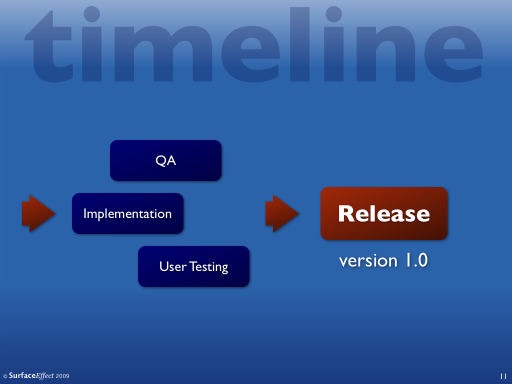The Interaction Design Process
Next comes the implementation. As it takes shape Quality Assurance starts up, and this should include ensuring that the implementation matches the design accurately. Related to the QA process is User Testing. This is a valuable tool to fill in some of the gaps that are hard to fill during earlier phases of design. While late stage user testing rarely reveals structural issues with the design it is very useful in polishing parts of the design which may otherwise confuse users. Wording in dialogs, icon clarity, visual design, terminology and other detail related points. Feedback may also include requests for specific features. These should not be taken literally, but instead investigated to find the underlying need that the respondent is trying to achieve with the new feature. This may lead to more radical redesign. Of course, issues of that nature should ideally be captured earlier on in conceptual design using techniques such as participatory design or simply by better initial research.
Once version 1.0 is released that isn't the end of the story. Now it's time to rinse and repeat. You may choose that for version 2.0 you'll revisit design ideas which were rejected from version 1.0 for cost or time reasons. For version 3.0 you may decide to return to carry out more extensive initial research or to redesign for a slightly different market segment. Those are important business decisions, but you will often find Interaction Designer may have useful input to offer as you begin the cycle again.
This was presented at the “Usability: What's the Use?” event at the CUBE in Manchester, Jan 28th, 2009.


